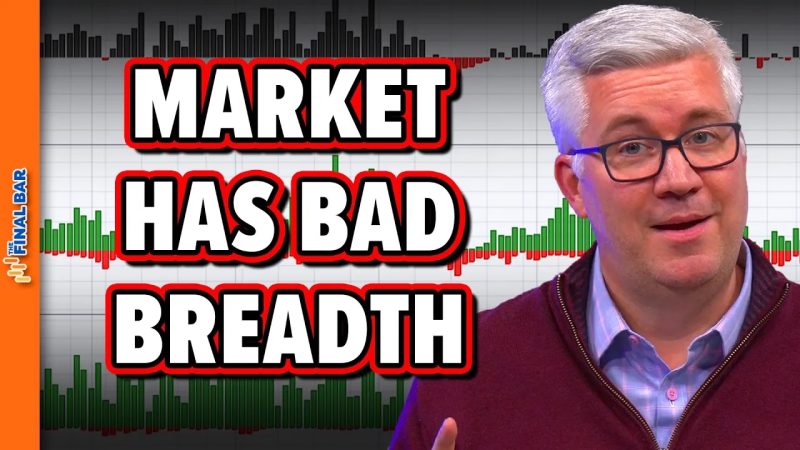Market breadth plays a crucial role in providing investors with insights into the overall health of the stock market. It refers to the measure of the number of individual stocks that are participating in a market move. A strong market breadth indicates that a broad base of stocks is participating in the market rally, signaling a healthy and sustainable uptrend. On the other hand, poor market breadth suggests that only a limited number of stocks are driving the market higher, which could be a warning sign of underlying weakness.
One of the key reasons investors should be cautious about poor market breadth is its potential impact on the sustainability of a market rally. When only a handful of stocks are driving the market higher, there is a risk that the rally is not supported by the majority of stocks. This lack of broad participation increases the vulnerability of the market to sudden shifts, as any negative news or events affecting those few high-flying stocks can lead to a sharp market correction.
Furthermore, poor market breadth can also indicate underlying divergences within the market. For instance, if the broader market indices are hitting new highs while a significant number of individual stocks are not following suit, it could be a sign of sector rotations or market manipulation. Such discrepancies can lead to increased volatility and make it challenging for investors to make informed decisions based on market signals.
Another concern raised by poor market breadth is the risk of a market being over-reliant on a few key stocks or sectors. When a small group of stocks significantly outperform the rest of the market, it creates a concentration risk that can destabilize the market if the fortunes of these stocks change. Investors who heavily allocate their portfolios to these high-flying stocks are exposed to a higher level of risk in case of a market downturn.
In conclusion, while poor market breadth alone may not signal an imminent market crash, it serves as an important warning sign for investors to exercise caution and conduct a thorough assessment of the market conditions. Monitoring market breadth indicators along with other fundamental and technical analysis can provide a comprehensive view of the market’s health and help investors make more informed decisions. By diversifying their portfolios, staying informed about broader market trends, and being mindful of the implications of poor market breadth, investors can better navigate through volatile market environments and mitigate potential risks.




























